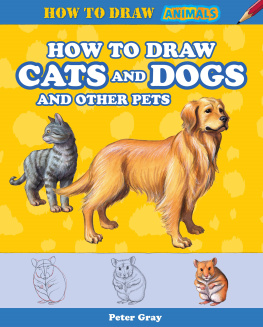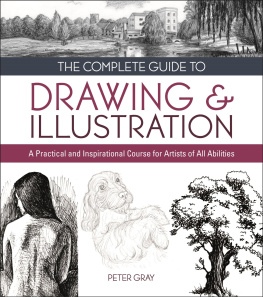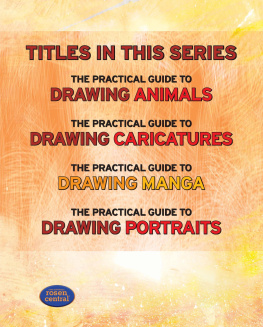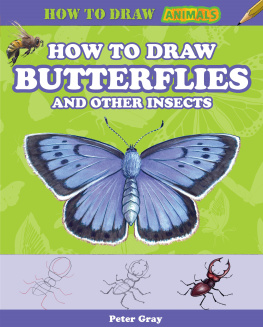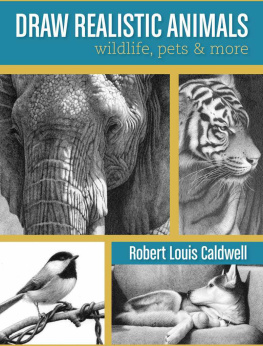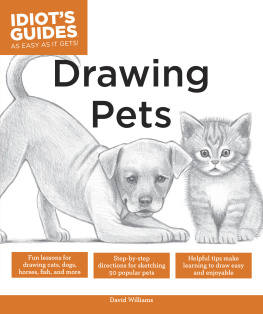Table of Contents
HOW TO DRAW ANIMALS
Peter Gray
CATS AND DOGS
and Other Pets
How to Draw
Published in 2014 by The Rosen Publishing Group, Inc.
29 East 21st Street, New York, NY 10010
Copyright 2014 Arcturus Publishing Ltd.
All rights reserved. No part of this book may be reproduced in any form without permission in writing
from the publisher, except by a reviewer.
Illustrations: Peter Gray
Editors: Joe Harris and Nicola Barber
U.S. Editor: Joshua Shadowens
Design: sprout.uk.com
Cover design: sprout.uk.com
Library of Congress Cataloging-in-Publication Data
Gray, Peter, 1969
How to draw cats and dogs and other pets / by Peter Gray.
pages cm. (How to draw animals)
Includes index.
ISBN 978-1-4777-1300-6 (library binding) ISBN 978-1-4777-1411-9 (pbk.) ISBN 978-1-4777
1412-6 (6-pack)
1. Animals in art. 2. Cats in art. 3. Dogs in art. 4. DrawingTechnique. I. Title.
NC783.8.P48G73 2014
743.69772dc23
2012047591
Printed in China
SL002686US
CPSIA Compliance Information: Batch #AS3102PK: For Further Information contact Rosen
Publishing, New York, New York at 1-800-237-9932
CONTENTS
The Basics
Tips and Tricks
Golden Retriever
Cat
Hamster
Rabbit
Backyard Scene
Glossary
Further Reading
Websites
Index
Start your drawings with simple
guidelines before eshing them
out with detail
Build up the general
shape of your subject
with guidelines. I have
drawn the guidelines
heavily to make them
easy to follow, but you
should work faintly with
a hard pencil.
For a bold look, go over the
outlines with ink Wait for the
ink to dry thoroughly, then
erase all the pencil marks
The easiest inking
method is to use
a felt-tip pen. If you
plan to add paint
at a later stage,
make sure your
pen is waterproof.
For a more
graceful
effect, use
a ne-tipped
watercolor
brush dipped
in ink.
Use a softer
pencil to develop
the character
and details. You
may nd that
you do not
follow the
guidelines
exactly in
places. Thats nethey are only
a rough guide.
Carefully erase
the guidelines
and mistakes.
Then add shading
and texture with
a soft pencil.
DRAWING
INKING
Felt-tip pen outlines
Guidelines
Detail
Shading and texture
Brush outlines
THE BASICS
Colored pencils are the easiest coloring
tools to use, but you have to take great
care to blend the colors to achieve a
good nish.
Felt-tip pens produce bright, vibrant
colors. Work quickly so that the pen
strokes do not remain visible.
The subtlest effects can be achieved
with watercolor paints. It is best to buy
these as a set of solid blocks that you
wet with a brush. Mix the colors in a
palette or on an old white plate.
Although I use watercolors in
this book, the main principles
are the same for any materials
start with the shading, then
add in markings and textures,
and nally, work your main
colors over the top
COLORING
Felt-tip coloring
Watercolors
Colored pencils
TIpS AND TRICKS
pAWS AND CLAWS
Just as many people nd it difcult to
draw human hands, a lot of us nd it
hard to draw animal paws Here are
some tips to make paws easy!
Heres a dogs paw seen from the side. Note
that it is L-shaped and that the knuckles rise
up slightly. The view of the bones inside will
help you to understand the structure.
Divide the
foot into
toes. The
middle two
toes are
much taller
and broader
than the
outer ones.
These
examples
are of short-
haired
breeds, so
you can
clearly see
the shapes of
the knuckles and the claws.
DRAWING pAWS
Dog and cat paws differ in the size of
the claws and the general character
rounded for the cat and more angular
for the dog
For the guidelines, the main thing to
consider is the overall shape of the paw.
Dog
Dog
Dog
Cat
Cat
Cat
Dog paw
Dog
skeleton
DRAWING FUR
The important thing to start with is to
make the animal convincing before going
into any detail. Where fur is very long, it
can be sketched in as a broad shape.
Once the basic outline is right, you
can start to add details for the fur. The
fur over the top of the head is usually
shorter than that under the chin, and the
ufest hairs are often found in the ears.
Indicate the direction in which the fur
ows over the body with simple marks.
To ink in the marks, use long, swift
owing strokes of the brush or pen, and
work around the whole drawing quickly.
Dont feel that you need to ink every
mark or outlineif the fur is very ne
or pale, it will need no more than a few
wispy strokes.
Whether drawing a long- or
short-haired animal, you can
never show every hairinstead,
you need to simplify and suggest
the texture of the fur Generally,
the more marks you use, the
shabbier the animal will look
Long fur
Short fur
Short fur detail
Short fur inking
Long fur detail
Long fur inking
Golden retriever dogs are well-loved pets in many homes They
are gentle, loyal, and very intelligent They also love playing in
water! Their thick golden coat has two different types of fur
a soft underneath layer that helps to keep the dog warm and a
shaggier outer layer that is water-resistant to keep the dog dry
GOLDEN RETRIEVER
Dogs come in all shapes
and sizes, but the
rst steps for drawing
them are similarits just the
proportions that change. The
golden retriever has a large,
long body with a relatively small
head. Draw the body and head
as simple shapes, an oval and a
circle, with a space in between.
Now connect the
head to the body with
curving lines that show
the neck leaning forward. Draw
the upper part of the rear leg as
a broad shape that also forms the
dogs rump . Then mark the front
edges of the legs, being careful
to make them the right length.
Finish the leg
guidelines
and add paw
shapes. The tail is broad,
curving to a point. Draw
a roughly triangular
muzzle, and mark a

